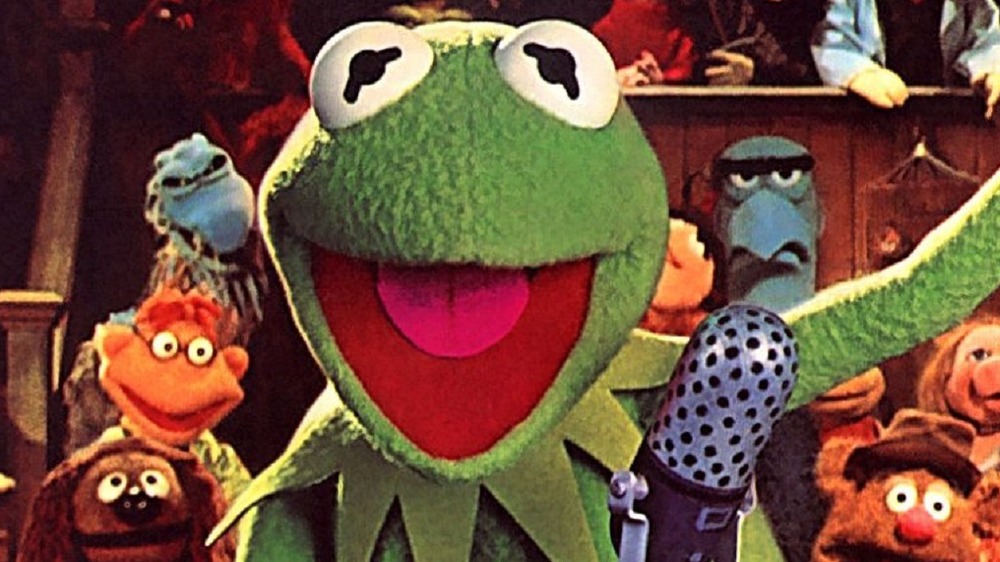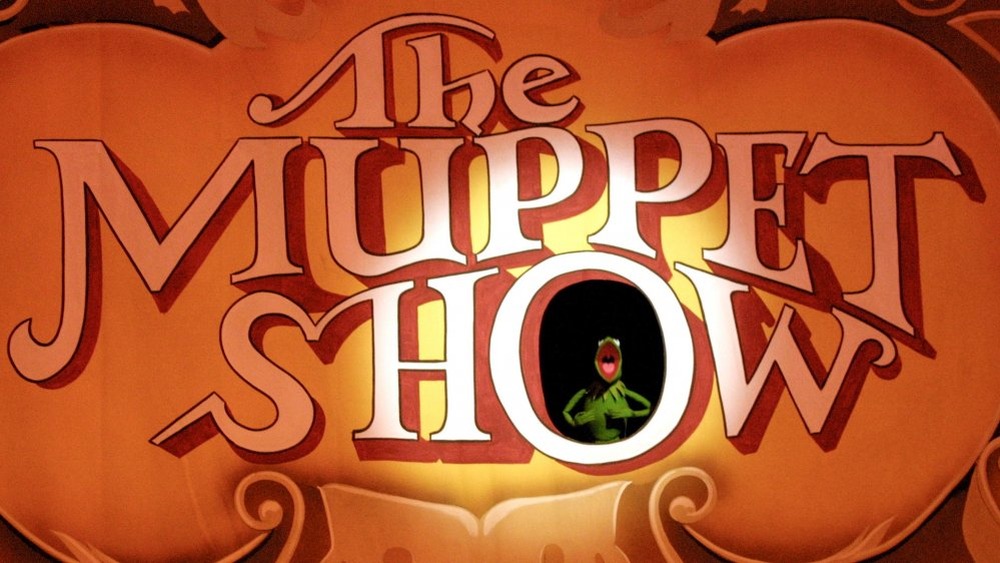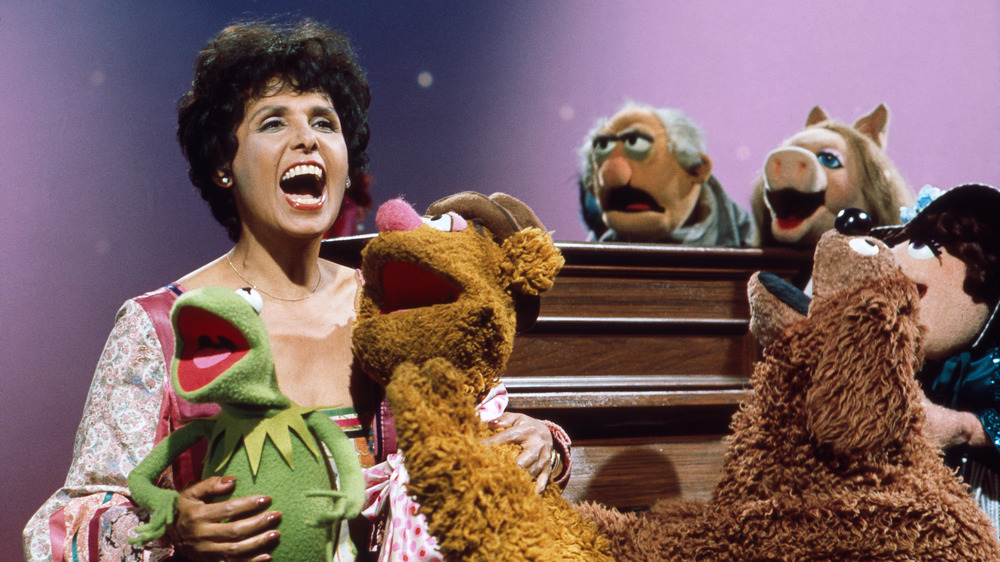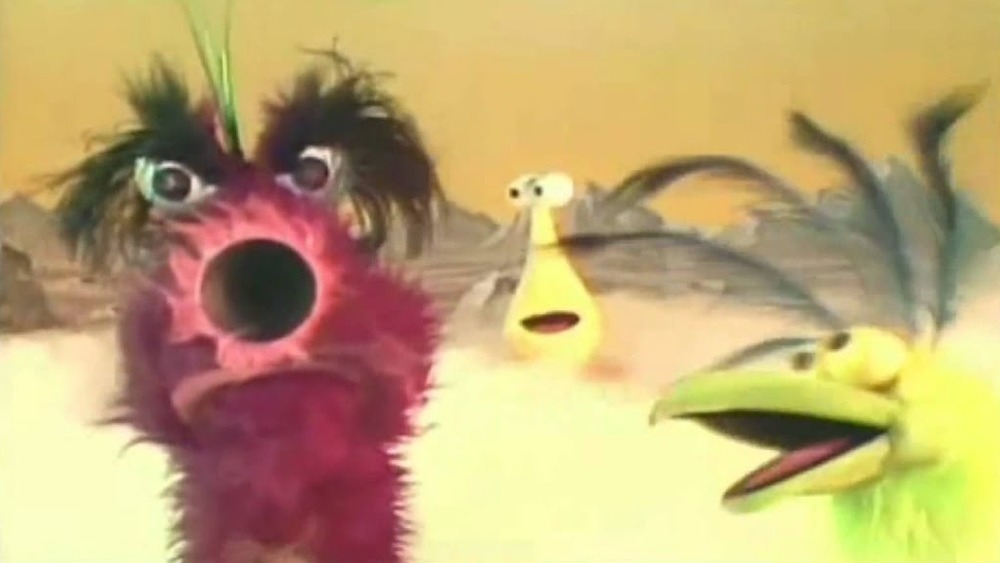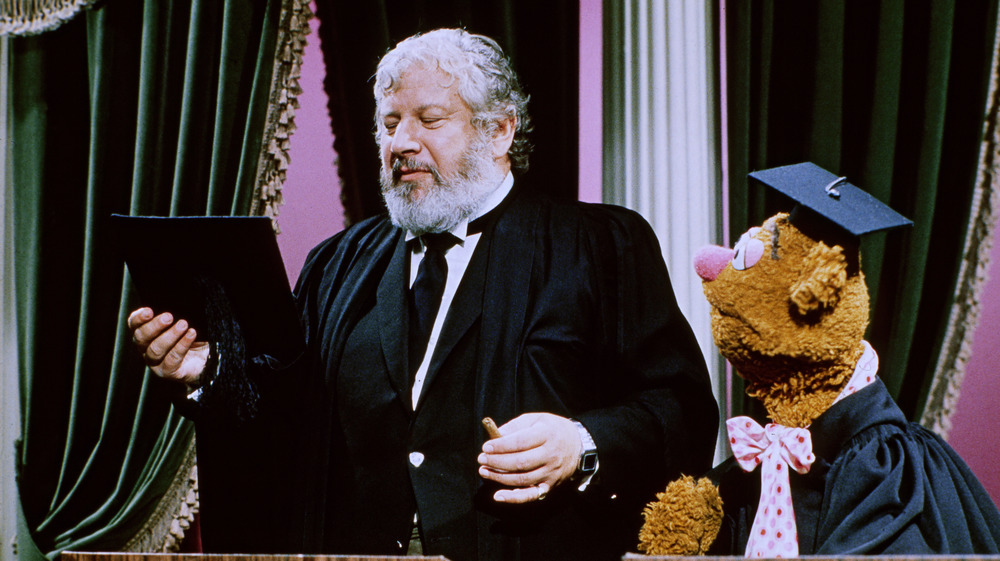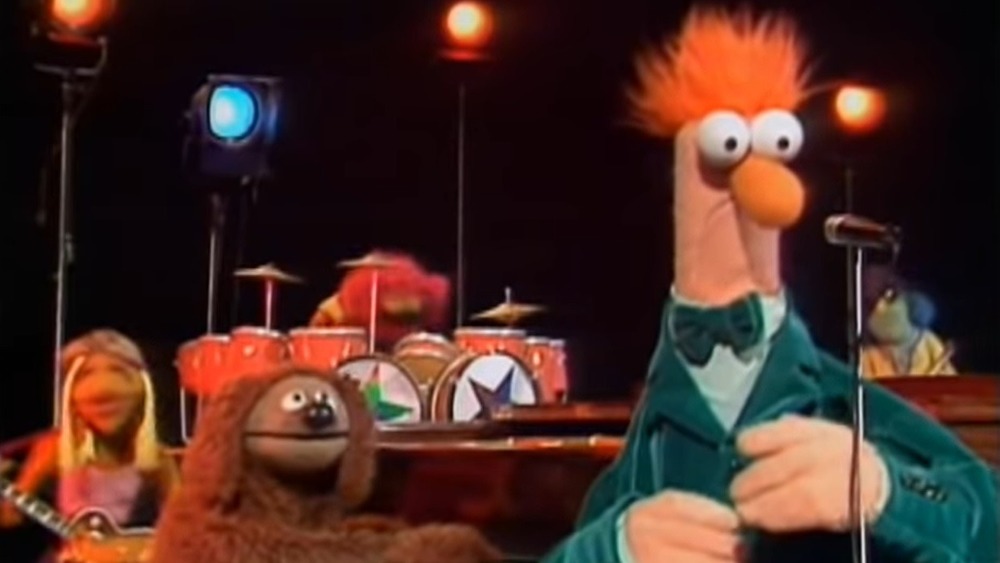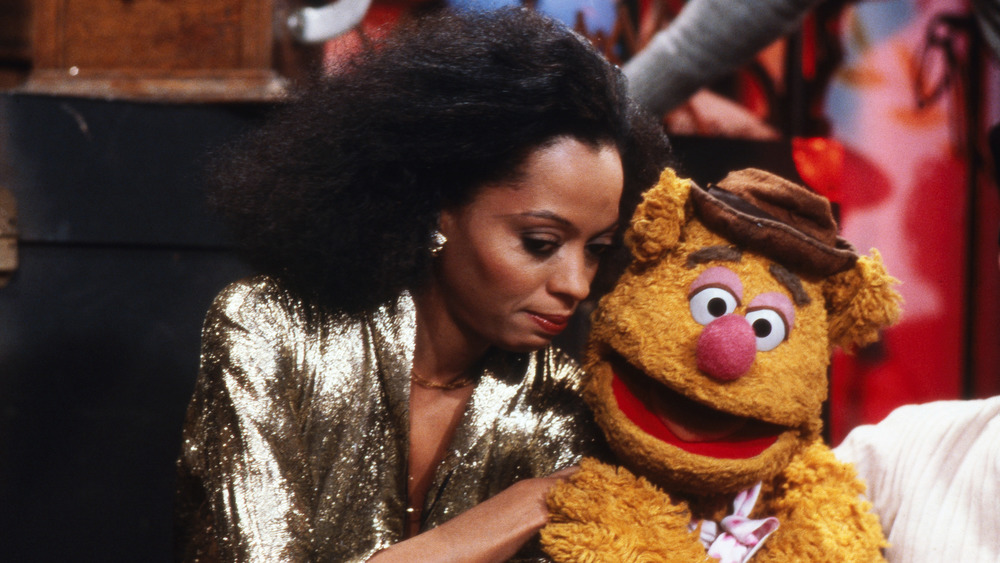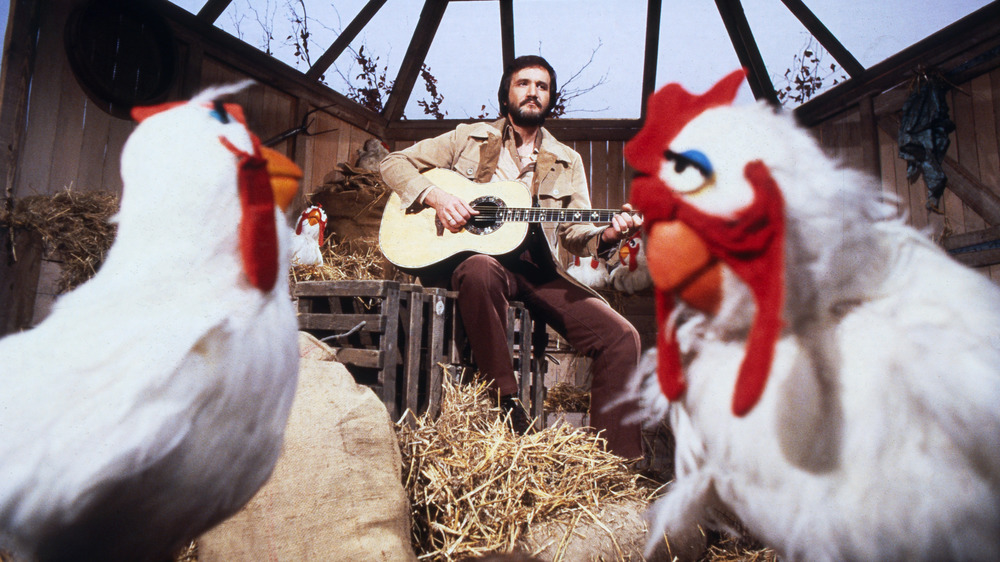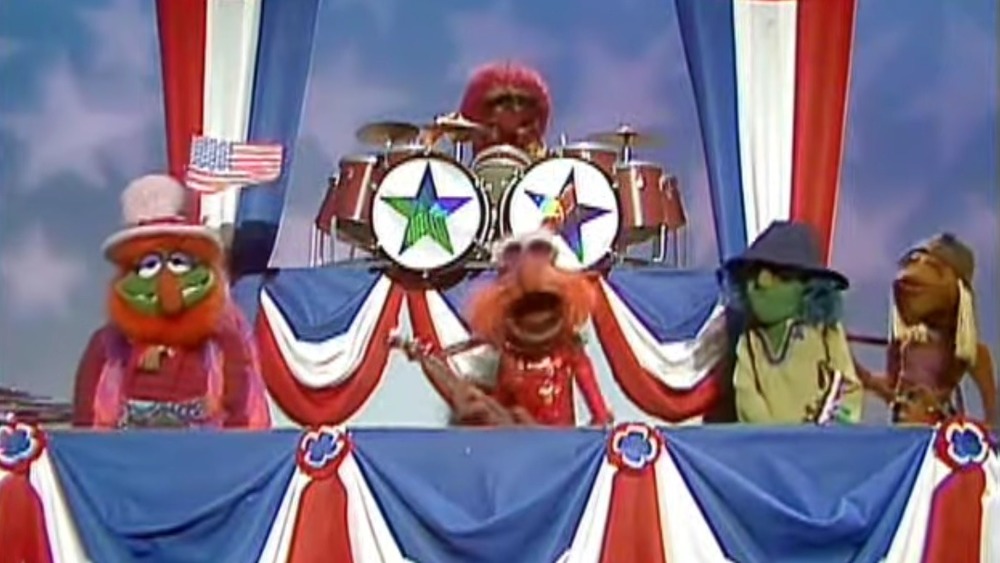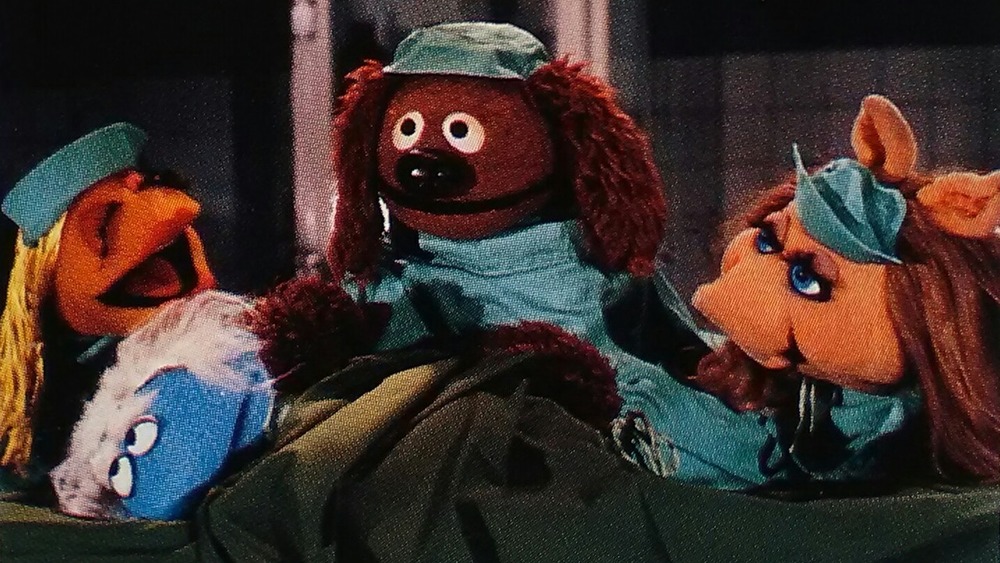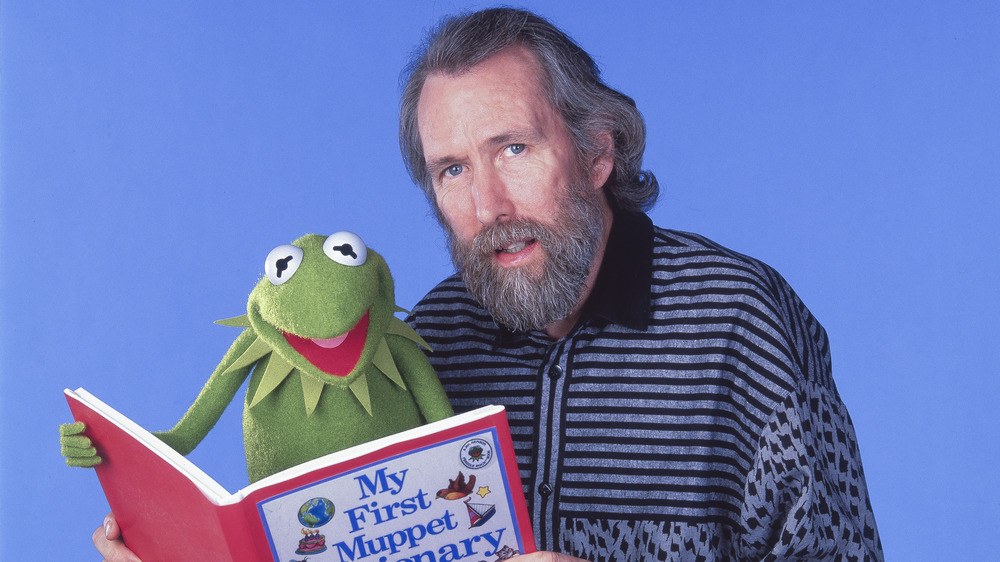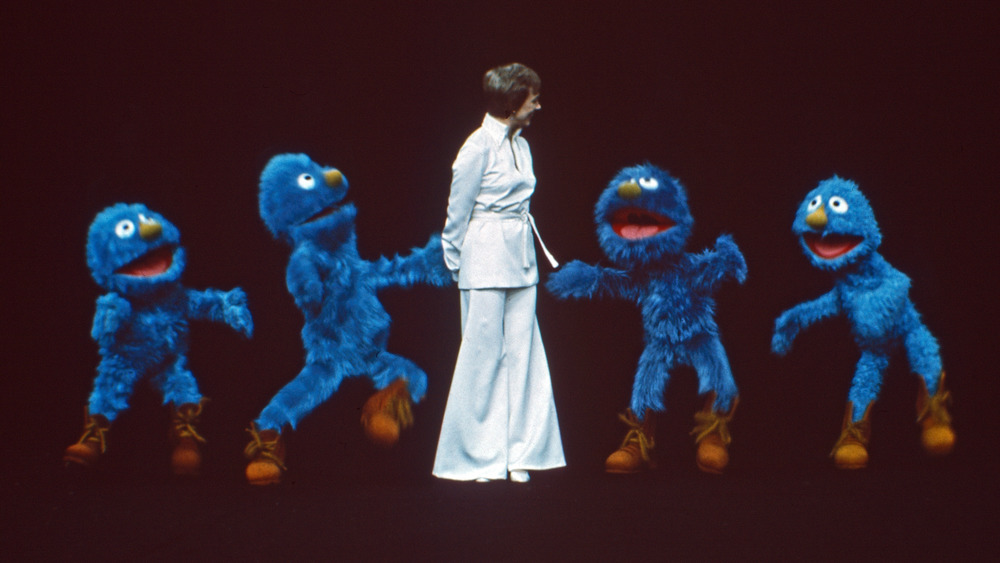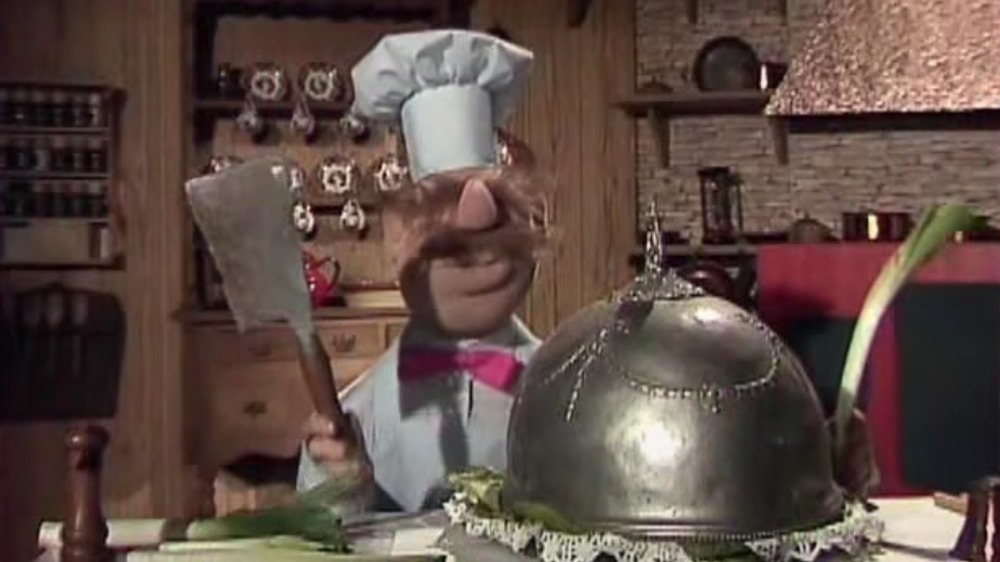Things Only Adults Notice In The Muppet Show
It's time to play the music! It's time to light the lights! It's time to learn about The Muppet Show tonight!
In the 1970s, Jim Henson and company brought Kermit the Frog, Miss Piggy, and the rest of the gang to TV. The result was a variety-style show full of wacky songs, horrible puns, and incredible guest stars. However, if you were to revisit the series as an adult, you might find there's more to the show than you realized the first time around.
After all, The Muppet Show was Henson's appeal to a grown-up audience, for himself and the whole medium of puppetry, after his success of Sesame Street pigeonholed him as a children's entertainer. The prime-time series aired after the Sesame Street crowd's bedtime, and it was truly fun for the whole family, with pop culture parodies pitched well above the little ones' reading level and subtle details to reward faithful and careful viewers. And if you want to discover some of the things only adults would notice about The Muppet Show, keep on reading for all sorts of fun, felt-covered details.
Kermit ends up in a precarious position in the Muppet Show theme song
The Muppet Show throws so many gags at the screen it can be hard for viewers, especially kids, to catch them all. And it starts doing that from the moment it begins. Kermit the Frog starts every episode by popping out of the "O" in a giant Muppet Show logo to announce, "It's The Muppet Show with our very special guest star..." Then the title rises into the rafters to make room for the Muppet dancers to come onto the stage.
But what happens to Kermit when all this happens? If you look closely, you can see him wondering himself. Barely visible in the shadows above the stage, far away from the camera, you can spot Kermit looking down nervously as if he's trying to figure out how to get out without plummeting to his doom. You'd think after 120 episodes, he'd have learned how not to get stuck, but there you are.
The Muppet Show started in a very different place than it ended up
If you ever decide to watch The Muppet Show from the beginning, you may find it's very different than you remember. The Muppet crew spent most of their first season figuring out just what this sensational, inspirational, muppetational show was going to be.
Most of the primary cast are there, but they don't look quite right. Fozzie Bear looks browner and dirtier, with a bigger mouth and ears, and Miss Piggy's eyes are smaller. Gonzo's not the excitable maniac we know and love but a scraggly sad sack with permanently downcast eyes. Muppet Labs is already there, but Dr. Bunsen Honeydew is all alone, with no Beaker to inflict his experiments on.
And other, unfamiliar characters take center stage, like the abstract, birdlike Mildred Huxtetter, Hilda the wardrobe manager, and George the janitor. (Given how old those last two are, we have some dark thoughts about where they might have gone.) Two of them would be missed — Wayne and Wanda, who'd sing duets, or at least start to before being interrupted seconds in by some disaster. Fortunately, someone on set seems to have remembered them, since they reappear in season four, where we learn they disappeared because Kermit fired them. They guilt him into taking them back ... just so he can boot them again when he remembers how terrible they are.
Adults will notice one strange sketch is a parable on nonconformity
The Muppet Show's first season may have shown some growing pains, but it's still loaded with classic moments. One especially unforgettable skit has a deeper meaning than kids may realize.
It takes place in an alien, smoke-filled landscape (the better to hide the puppeteers), the home of a feathery purple monster who likes to sing the nonsense syllables "hugga wugga" and tries to force everyone else to sing along until he's defied by a little yellow thing who'd rather sing "You Are My Sunshine." This was one of Henson's favorite sketches, and he performed it on many talk and variety shows throughout the '60s. The adult eye can recognize the era's ethos in the bit. The '60s were a time of rebellion and nonconformity, and it's easy to see the bullying purple monster as a stand-in for the establishment, demanding everyone act the same way, which the little yellow creature beats the odds to overcome.
And "You Are My Sunshine" could stand in for any number of nonconformist lifestyles, from the hippie "drop-outs" to the burgeoning gay rights movement. But the advantage of parables is they don't have to be tied to any one time or message. It's really about marching to your own drummer or singing your own song, whatever it is.
The Muppet Show credits sneak in a callback
This particular season one episode hides one of its funniest moments someplace that few people, especially kids, would think to look for it.
The Peter Ustinov episode is a highlight of the series' first year, opening with the beloved character actor from classics like Spartacus and Disney's Robin Hood having some difficulty adjusting to the wacky Muppet world. He complains that he tried to sit down and his chair walked away, and Kermit explains, "That chair is a Muppet. She's married to one of our writers." When that just confuses Ustinov more, Kermit tells him the writer is a hat rack.
At the end, Ustinov comes onstage with the hat rack and says they've been talking and, in a Fozzie-worthy pun, that the rack is a talented individual who "wears more than one hat." Stick around through the credits for the punchline to the whole bit. The credits list, along with the regular writers, "the hat rack."
The Muppets put their own spin on the era's biggest hits
One of the most beloved aspects of the Muppets is their library of iconic original songs, whether it's Sesame Street's "Being Green," The Muppet Movie's "The Rainbow Connection," or David Bowie's soundtrack for Labyrinth.
The Muppet Show's variety-style format means it's full of music, but on this project, Henson and company looked more to established hits. Kids won't recognize many of them, but they should be immediately recognizable to adults. Every episode features a variety of jazz standards, country classics, Broadway showstoppers, and contemporary hits. You may recognize the work of Cole Porter, the Beatles, Stephen Sondheim, and Crosby, Stills, & Nash. Guest star Paul Simon gets a whole episode of nothing but his songs, including classics like "Scarborough Fair" and "Baby Driver," as performed by an actual baby driver.
Sometimes, the crew would just put some Muppets on stage to sing the cover and call it a day, but the best episodes are far more creative. The Village People's disco hit "In the Navy" becomes an anthem for Viking pigs. Fozzie Bear tries to sing the title song from the musical Oklahoma! until he realizes the set's decked out as feudal Japan, full of samurai who correct him with, "Yokohama!" Best of all, Beaker somehow makes Morris Albert's sludgy, easy-listening hit "Feelings" bearable with his unintelligible interpretation, to the audience's scorn and our delight, in one of the funniest sketches the Muppets ever did.
It's full of stars
The variety format means The Muppet Show is packed with celebrity guests. Most of them will be unfamiliar to kids, especially those watching the show almost 50 years later, but adults will recognize them as legends. You can't get a winner every time, of course. The Muppet Show drew from the same pool as other, lesser variety shows, meaning many episodes feature the most quickly forgotten stars of the '70s and '80s, the equivalent of the tabloid stars of the 2000s or the social media influencers of the 2010s.
But the crew went out of their way to book the stars who'd influenced them, giving us the chance to see Kermit and company interact with old-school showmen like Gene Kelly, Peter Sellers, and George Burns. The UK-based show also drew on the surreal comedy of Monty Python and BBC Radio's The Goon Show, and both of those series' stars — John Cleese and Spike Milligan, respectively — appeared on The Muppet Show.
And the show's more contemporary stars represent the best of the era as well, including soul diva Diana Ross, Blondie's lead singer Debbie Harry, shock rocker Alice Cooper, country legend Johnny Cash, glam rocker Elton John, and comedy icon Steve Martin. They even scored Mark Hamill, fresh off his blockbuster success on Star Wars, as both himself and his "cousin," Luke Skywalker.
Roger Miller riffs on his Disney role
When one guest star appeared on The Muppet Show, he decided to have a little fun with his past employer (and the future owner of the Muppets) — Disney. A true redneck who spent his youth working in the fields of Oklahoma, Miller clawed his way to success as one of country's biggest stars in the '60s with hits like "King of the Road," "Chug-a-lug," and "Dang Me." In 1973, he branched out into the world of animation with an appearance as Allan-a-Dale, the musical narrator of Disney's country-inflected retelling of Robin Hood, which he composed the songs for. The movie also imagined the characters as talking animals, with Robin Hood as a fox, Little John as a bear, and Allan-a-Dale as a rooster.
The Muppet Show's writers must've had that in mind when Miller joined them in 1979. The episode's plot involves an outbreak of "cluckitis," a disease that turns the cast into chickens. Miller even says he's had some experience with the illness before — no doubt thinking of his time as an animated chicken in Robin Hood.
The Electric Mayhem are based on real rock stars
The contemporary audience would've recognized the Muppet Theater's house band as parodies of popular rockers, but since most kids met the Electric Mayhem before their real-world counterparts, they may need some explanation.
Frontman Dr. Teeth takes his name, raspy voice, and creative mangling of the English language ("It is indeed a problem for us to probosculate upon") from Dr. John, the Night Tripper, a New Orleans-based bluesman whose Mardi Gras-influenced dress sense makes Dr. Teeth look downright conservative. Janice's name, give or take some letters, should be familiar to Janis Joplin fans, the artist who had hits such as "Piece of My Heart," and "Me and Bobby McGee" before her death at 27.
Bass player Sergeant Floyd Pepper takes his name and costume from the Beatles' classic album Sgt. Pepper's Lonely Hearts Band. There may be a second, sneakier reference there, too, since his skin tone makes him a pink Floyd, connecting him to the psych-prog pioneers behind Dark Side of the Moon and The Wall.
It's hard to imagine any real drummer as violent as Animal, but the Who's Keith Moon, who trashed more hotel rooms than most rockers have even stayed in, comes close. Saxophonist Zoot may seem like the odd man out, but designer Bonnie Erickson says she sketched the puppet after seeing Brazilian jazzman Gato Barbieri.
The recurring Muppet Show sketches were based on contemporary TV
Unless kids spend a lot of time watching reruns of even older shows, they're liable to miss the references that make up the backbone of The Muppet Show. Some of them should be easy for adults to spot, like Pigs in Space, a spoof on sci-fi shows like Lost in Space and Star Trek. But others may be trickier.
For instance, the Swedish Chef has so far eclipsed his namesake that you may miss that he started as a parody of Julia Child's show, The French Chef, right down to the set design. Veterinarian's Hospital dresses up Rowlf (as Doctor Bob), Miss Piggy, and Janice in surgical scrubs, supposedly to perform operations but really just to make some of the worst puns known to man. The setting and electric organ soundtrack come straight from General Hospital, a soap opera that's been airing on ABC ever since 1963 and is still on the air (minus the electric organ) today. The narrator who begins and ends every episode goes back even farther, parodying the style of radio dramas from before TV killed the medium.
Meanwhile, the season one sketch "At the Dance," which bops around between dancing couples sharing bad puns, was borrowed wholesale from the cocktail party skits that appeared in almost every episode of one of the era's most popular variety shows, Rowan and Martin's Laugh-In.
Five guys played a cast of thousands in The Muppet Show
One of the most striking things about The Muppet Show is its overflowing stable of frogs, pigs, penguins, chickens, monsters, rats, living food, beasts of the field, birds of the air, and unidentifiable others. All that variety becomes even more impressive when you realize most of them are played by just five puppeteers. And it becomes even more impressive when you start to listen closer and realize that Frank Oz and Jim Henson were able to differentiate their dozens of characters with just slight variations on their natural voices.
Neither of them is exactly the man of a thousand voices — most of their characters are just based on a spectrum of how much pitch and gravel they add, creating a range that goes from Kermit to Rowlf on Henson's side and Miss Piggy to Animal on Oz's. But within that space, they add enough shading to make each of their characters unique. Jerry Nelson shows more variety, but the more episodes you watch, the easier it is to pick out the similarities between Robin, Floyd Pepper, and Uncle Deadly. But you'll have a harder time with Richard Hunt, who played everyone from young, innocent Scooter to the monstrous Sweetums until his untimely death from AIDS, or Dave Goelz, who still inhabits Gonzo, Dr. Honeydew, and a host of others.
It's not just hand puppets
Even kids have a general idea of how the Muppets work — many of them even got their own to play with, making Kermit's mouth open and close with their hands. But the truth is much more complicated. Hand puppetry is the basis for most of what we see on The Muppet Show, but Jim Henson was passionate about expanding the artform's potential with complex techniques. As a result, even the simplest characters are augmented with rods, allowing their arms to move. Often, a second puppeteer operates one arm, but other times, they're pinned to the puppet's torso.
Other characters like Fozzie and Rowlf are called "live-hand Muppets," with one hand operating the head, the other stuck through the puppet's arm like a sleeve and glove, and an assistant puppeteer operating the other arm, which is what allows Rowlf and Dr. Teeth to play piano so convincingly. Most of these techniques mean we can't see the puppets from the waist down, since that's where the puppeteer is. But some sketches borrow from the Japanese art of bunraku, where multiple puppeteers operate a single puppet with rods, allowing all the limbs to move at once. To complete the illusion, the puppeteers will perform in all-black suits on a black background, or sometimes they're blue-screened out. The human-sized (or bigger) Muppet monsters are full costumes, with the puppeteer wearing its legs and one arm and using their other arm to work the puppet's eyes and mouth.
The Swedish Chef has human hands
One of The Muppet Show's strangest characters is the Swedish Chef. Speaking in a stream of vaguely Swedish-sounding gibberish, the Chef hosts a cooking show that unfailingly descends into violent mayhem. This seems to be the only kitchen stocked with axes, sledgehammers, and 17th-century blunderbusses, but the Swedish Chef keeps needing them to subdue his still-living food, even when he cooks vegetarian dishes.
The Chef's weirdness extends to the way he's performed. Many Muppet fans make it all the way to adulthood without catching onto this bit of weirdness, but pay close attention and it's obvious that the Swedish Chef goes one step beyond the other live-hand puppets — those are actually Frank Oz's human hands poking out of his sleeves! This gave Oz the opportunity to improvise, forcing Jim Henson, who voiced the character and worked his head, to scramble to keep up. That tension allowed the Chef sketches to take Muppet chaos to a whole other level. It's no wonder they're consistently one of the funniest things on the show.
